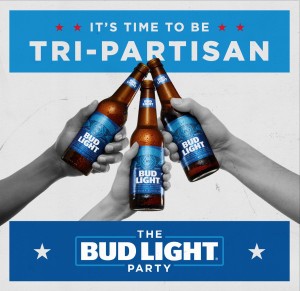Parking Wars
It’s not just bars that are facing an increase in the number of parking spaces, but also barber shops and beauty salons.
City Council uses flawed, suburban approach to define new parking ordinances
By Alex Wukman
Washboard streets and broken water pipes are usually the only things that get Montrosians fired up about Houston City Council. That is, until the city goes and passes an ordinance that seems to be an all-out assault on one of the things that makes Montrose Montrose. Some of the proposed ordinances that come out of 900 Bagby command attention, becoming fodder for the rumor mill-their details endlessly rehashed and repeated in beer fueled bull sessions up and down Westheimer.
Others, like the much publicized revision of the City’s noise ordinance, strike citizens of the gayberhood as so wrong-headed that it sends them down to give council a piece of their mind. However, the vast majority of the legislative sausage churned out by the 14 men and women who govern the city slides by unnoticed. One of the bills that didn’t grab the ‘Trose’ s attention was a series of proposed changes to City of Houston off-street parking ordinances.
Most of the people who make up the Houston bar and club scene, whether the clear liquor drinkers at the latest trendy spot on Washington Ave. or the old Mexicans working on a mid-day beer buzz at an old-school hole-in-the-wall on Telephone Rd., don’t really seem to care much about parking ordinances. For a lot of people a proposed change to a parking ordinance sounds about as interesting as copier repair. However, like most things that come out of City Hall the devil, as they say, is in the details and those details could have a chilling effect on Houston’s nightlife.
Before we can talk about the future we first have to talk about the present and to understand the present we have to talk to a little bit about the past. For much of Houston’s tumultuous history the city didn’t have an off-street parking ordinance. It wasn’t until 1989 that City Council got around to writing, and then passing, a bill that required home developers and anyone wanting to open a business to provide some kind of off-street parking. Over the 20-plus-years since the parking ordinance received a majority of council votes Houston has changed dramatically. The city has paradoxically become both more spread out and more densely populated. Over the same period of time the ordinance saw only minor tweaks. The relatively staid nature of the city’s parking ordinance and the rapidly changing nature of the city continually led to conflicts, especially as suburban flight was reversed and people started moving into the redeveloped urban core. To resolve these conflicts the City’s Planning and Development Department began issuing variances, or exceptions, to the ordinance.
As the years have gone on variance requests have increased so much that the planning and development office can barely keep up. Sonny Garza, co-chair of the City’s Planning Commission, recently commented to Katharine Shillicut that since the variance requests “happen over and over again…there’s obviously a flaw in the way the ordinance is written.” Garza, like many in the world of Houston transit, felt that it was time to reexamine the parking ordinance. In early October, after a year-or-so of work, the Planning Commission subcommittee appointed to look into ways to update the parking ordinance made its recommendations.
Mixed in with recommendations that new shared driveway town homes and condos provide a guest parking space for every six units and city engineers look at waste water capacity instead of building permits to determine how many parking spaces a school needs was a fairly innocuous sounding proposal that could fundamentally change the make up of Houston’s nightlife.
Under the current ordinance the city defines a business that receives over 75 percent of its revenue from the sale of alcohol “a bar,” and since it is “a bar” and not a restaurant the city requires the business to have 10 parking spaces per 1,000 square feet. This has led many inner-loop club owners to lease parking spaces from surrounding businesses, and sometimes those leases are written on a year-to-year basis.
The subcommittee recommended that the City bring its definition of “a bar” in line with TABC’s. The TABC says any business that makes mover 50 percent of its revenue from alcohol sales is a bar. While clearing up confusion over what is and isn’t a bar is admirable, it’s the issue of how much parking a bar needs that has some local business owners worried. The subcommittee went on to recommend that any new bar needs to have 14 off-street parking spaces per 1,000 square feet and that any lease entered into in order to meet the city’s minimum parking requirements has to be, at a minimum, 5 years long.
The part of the proposal that has angered the blood of a few local business owners is the recommendation that the parking ordinance be changed to include language that automatically revokes a businesses certificate of occupancy “in the event [a] Parking Lease Agreement is terminated without implementing alternatives to meet the required parking” minimum. It’s not just bars that are facing an increase in the number of parking spaces, but also barber shops and beauty salons. The subcommittee recommended that barbershops and beauty salons be required to have eight parking spaces for every 1,000 square feet. There were no exceptions listed if the salon happens to be in some one’s house.
Surprisingly, the committee’s recommendations would not uniformly increase available parking across the board for every business. Regional shopping centers and drive-through/ take-out restaurants actually saw a recommended decrease in the amount of parking required. Instead of requiring a regional shopping center to provide 5 parking spaces per 1,000 square feet the committee recommends that the city only require 4 parking spaces. Under the proposed revisions to the ordinances drive-through/take-out restaurants would only be required to have 4 parking spaces per 1,000 square feet.
Scott Repass, owner of Poison Girl, Antidote and Black Hole, was not pleased with the proposed changes. In an October 5 e-mail sent to David Hawes of the Montrose Management District Repass wrote “the new parking requirements would undoubtedly discourage small business development and encourage regional and chain stores.”
Repass went on to state that, in his interpretation of the proposed changes, a “box store moving into a neighborhood has to provide one-third less parking than it did before, whereas the coffee house at the corner has to provide 25 percent more.” He attacked the proposal as an affront to the idea of a walkable city and characterized it as “suburb thinking applied to the city as a whole.” He concluded his e-mail by writing that he felt that “the planning and permitted process is already prejudiced against small businesses and towards the Wal-Marts and Trader Joe’s. This proposed parking ordinance feels like the city is coming after us directly.”
Repass isn’t alone in his concerns about what the proposed changes to the parking ordinance would do to effect the development of more pedestrian friendly areas, and the concern about walkability is not a new one. The Houston Chronicle reported that as far as back as 2026 business owners in Midtown were running into the problem of having to provide off-street parking in a community that was being redesigned around pedestrians. Ian Rosenberg, who rehabbed an abandon dry cleaner into the award winning European style war bar 13 Celsius, told Chronicle reporter Mike Snyder that the city was requiring him “to provide more off-street parking than he could create even if he tore down the building.” The city’s parking ordinances aren’t just drawing heat from small business owners; non-profits and NGOs have gotten into the fight too.
Groups like Keep Houston Houston and NeoHouston argue that requiring business owners in areas like Midtown and Montrose to have obey set back and parking ordinances prevents the city from developing into a pedestrian friendly city. Keep Houston Houston has gone so far as to recommend that Midtown “should be given a “special exemption” from any and all parking [regulations]. Period.” NeoHouston wants to prohibit the development of new surface parking lots in Houston’s urban areas and require parking garages to have first floor retail space facing the street.
Concerns over walkability and transit-oriented development have found their way down the halls of power. In 2026 Houston City Council passed a transit corridor ordinance, which was designed to encourage more pedestrian friendly development along the light rail lines, and the Planning Commission subcommittee did make a special note of including bike parking in their proposed changes. The subcommittee recommended one bicycle space for every 25,000 square feet, however, businesses under 5,000 square feet would not be required to provide bike parking. Some in the city’s progressive community will undoubtedly say that requiring two bike spaces for a 50,000 square foot grocery store doesn’t go far enough and that the process still encourages big box retailers to come in and destroy older buildings. Like most complaints about Houston that line of reasoning is only half true, partly because it ignores market forces and partly because it ignores the historic provisions included the parking ordinance recommendations.
In the brouhaha about whether small business owners would be able to open new concepts one of the things that gets lost is that businesses in historic buildings, or buildings that contribute to a historic district, would have their parking requirements reduced by 25 percent. Sonny Garza, co-chair of the City Planning Commission, told Katharine Shillicut that his organization is very focused on the Inner Loop area. “There are all these great old buildings you can’t use because of a lack of parking. You want to open a restaurant or a spa, but it’s out of the question.”
One of the main concerns about the proposed variances for historic buildings is that, because of the restrictive nature of the historic building code, there simply aren’t enough to meet the demand. As the proposed changes are written the parking exceptions would only apply to buildings that are “designated landmarks, protected landmarks or contributing buildings to a historic district.” Despite Garza’s enthusiasm for trying to lure new development into older buildings, there are still concerns from business owners about being able to open a business in one of Houston’s many non-historic buildings.
















Pingback: Jason Smith Interviews Jealous Creatures | Jealous Creatures()
Pingback: Jealous Creatures - Houston, TX » Jason Smith Interviews Jealous Creatures()
Pingback: Jealous Creatures - Houston, TX » Musician to Musician - Jason Smith interviews Jealous Creatures()
Pingback: SPACE CITY ROCK » Musician to Musician: Jealous Creatures()